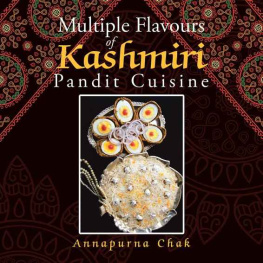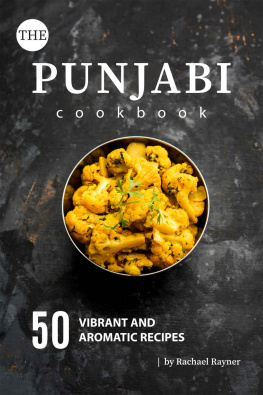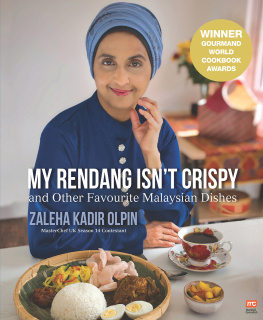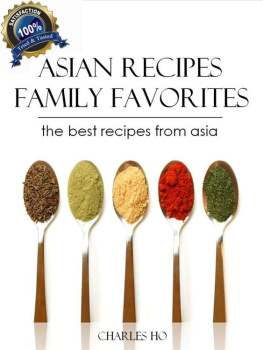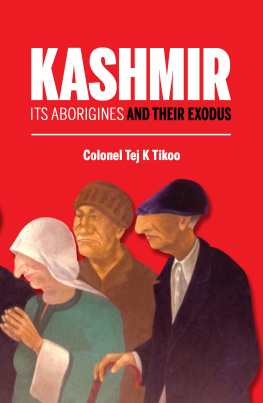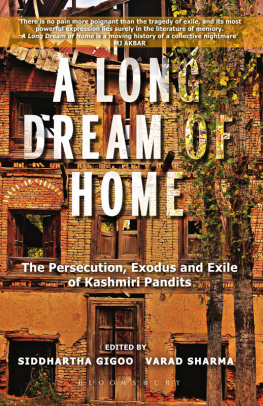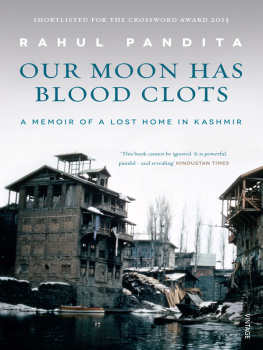
Copyright 2015 Annapurna Chak . All rights reserved.
ISBN
978-1-4828-3980-7 (sc)
978-1-4828-3981-4 (e)
All rights reserved. No part of this book may be used or reproduced by any means, graphic, electronic, or mechanical, including photocopying, recording, taping or by any information storage retrieval system without the written permission of the publisher except in the case of brief quotations embodied in critical articles and reviews.
Because of the dynamic nature of the Internet, any web addresses or links contained in this book may have changed since publication and may no longer be valid. The views expressed in this work are solely those of the author and do not necessarily reflect the views of the publisher, and the publisher hereby disclaims any responsibility for them.
www.partridgepublishing.com/india
01/06/2015

Contents
I dedicate this book to my mother, who is no more. She was undoubtedly the best cook I have known till now! Strange as it may seem but my very first lessons in cooking were derived from my mother through correspondence after my marriage! I still possess and treasure those invaluable hand-written Kashmiri recipes which she religiously sent to me one after the other making me sail through confidently during those initial years. This effort is a culmination of the cookery knowledge handed down from her and my own adaptations of Kashmiri Pandit food recipes tried out from some books on this cuisine.
My special thanks to my son Vinay and my daughter-in-law Sunanda for inspiring and motivating me to go ahead with the book. Without their whole hearted support this book would not have come into existence!
A big thank you to my son, Ashwin and my daughter-in-law Pragati, for their valuable suggestions and constant encouragement despite being far away.
My sincere thanks are due to my brother, Ashok, for reviving our childhood memories through some old house photographs.
Last but not the least I must thank my husband Sumant for having faith in my culinary skills and being admirably patient in trying out my experimentations! His photographs of the dishes have embellished my book and provided a visual treat for the readers.

OUR ANCESTRAL HOUSE IN CUTTACK

MY MOTHER NEXT TO PT. NEHRU AND DR. KN KATJU IN OUR CUTTACK HOUSE
Born into a Kashmiri Pandit zamindar family at Cuttack (Orissa), my love for delicious Kashmiri food began at an early age upon seeing our family observe all our festivals with traditional Kashmiri dishes prepared on these occasions.
Since my father was a Member of Parliament in the Constituent Assembly, our house in Cuttack had several visits by dignitaries like Pt. Jawaharlal Nehru, Sardar Vallabhbhai Patel, Dr. Hare Krushna Mahtab (C.M. of Orissa), Governor Dr. Kailash Nath Katju, Governor Asaf Ali and Aruna Asaf Ali, and Maulana Abul Kalam Azad on different occasions during the 50s.
It was on such visits that my mother would make the choicest of Kashmiri dishes and present them in the most attractive manner at lunch and dinner. A host of mouth watering dishes like the meat khubani, zafrani phirni, pulao, kabargah, dum aloo, roganjosh, koftas, methi chaman, khoye ka shufta, interspiced with chutneys, raitas and pickles would be laid out on the tables with great care. I was a child then but still remember these delicacies I had feasted on and have included them in my recipes. I was also intrigued by the way the food was cooked with my mother constantly instructing the cooks on how to use the right amounts of spice and herbs at the right time while cooking and the different manner in which each dish had to be prepared.
However, my tryst with cooking began only after my marriage. I immensely enjoyed experimenting with the recipes my mother would send me in each of her letters and I preserved these carefully in a special file. She was truly inspirational to me and her recipes were my stepping stones to the world of cookery. With the passage of time I honed my skills in the task of making various types of food with passion and great pride in my efforts.
Depending upon my husbands postings as an officer with the Indian Railways, we stayed in different parts of the country and met different types of people which further led me into experimenting with many recipes thereby adjusting the traditional methods with my own ideas. Experimenting with new techniques and ingredients is a pleasurable experience and gives a boost to your creative abilities.
When it comes to entertaining, we love giving our guests a red carpet treatment! Nothing makes me happier than cooking my favourite dishes for my family and friends. This cookbook is designed to help readers prepare some popular Kashmiri Pandit dishes both vegetarian and non-vegetarian and I hope they will enjoy using these recipes as much as I have enjoyed writing them!
Kashmir! The very name evokes pictorial images of the snow-covered Himalayan ranges surrounding the valley, rivers rushing down the foothills and plains, villages surrounded with greenery, terraced rice plantations, orchards and meadows, houseboats and shikaras floating on lakes and fields of lotus . truly a Paradise nestling in the folds of the Himalayas. This land of fruits and nuts with its natural beauty not only reflects itself through its exquisite crafts but also in its flavoursome cuisines.
Kashmiri cuisine has evolved over hundreds of years. The first major influence was the food of the Kashmiri Pandits, the Hindus of the Valley. The cuisine was then influenced by the culture which arrived with the invasion of Kashmir by Timur from the region of modern Uzbekistan. Subsequently Kashmir and its food have been strongly influenced by the cuisines of Central Asia, Persia, Middle East and Afghanistan.
The two culinary styles that are predominant in Kashmiri cuisine are those of the Kashmiri Pandits and the Kashmiri Muslims. The basic difference between the two is that of the liberal use of asafoetida (hing) and yoghurt among the Hindus and onions and garlic among the Muslims all of which impart a distinct flavour.
Wazawan, the pride of a Kashmiri Muslim Feast with its luscious spread comprising of a 36 course Wedding Banquet in which almost all the dishes are non-vegetarian is a delightful treat! The most commonly served items are Rista, Seekh Kababs, Tabak Maaz, Roganjosh, Daniwal Korma, Tsaman and Gushtaba to name a few.
The notable feature in Kashmiri Cuisine is Mutton of which there are over 30 varieties. Typical non vegetarian dishes are similar to Muslim dishes but vary in taste.
Though Brahmins, majority of Kashmiri Pandits are non-vegetarians preferring to eat selected meat pieces of a kid goat. There are some mutton dishes cooked by the Kashmiri Pandits who migrated to the Indo-Gangetic Plains in the 18 th and 19 th centuries. These dishes do not traditionally use any onion and garlic, chicken or egg. Yoghurt, asafoetida, dried ginger, cinnamon, cardamom and cloves form the base of the gravy. The meat is roasted in oil and yoghurt. Almonds are used more than walnuts. The meat is roasted for a longer duration and there seems to be a fairly strong influence of the Awadhi style of cooking. Some of the dishes of Kashmiri Pandits include Roganjosh or Sabut Salan, Koftas or minced lamb fingers, Pasande or flattened mutton chunks, Kabargah or batter fried mutton ribs, Shaljam Salan or Shabdeg (mutton with turnips), Golis (minced meat balls) with kaddu (pumpkin), karamkalla (cabbage) and methi (fenugreek), Keema (minced meat) delicacies, Kaleji or liver, Kababs (of meat /fish ) Machhli Dum ( fish cooked on slow fire), Khatti Machli (sour fish) and many more. Among the vegetarian dishes the more popular ones being Methi Chaman, Dum Aloo, Nadru Dum, Khatte Baigan /Aloo, Haak and Khoye Ka Shufta.
Next page
